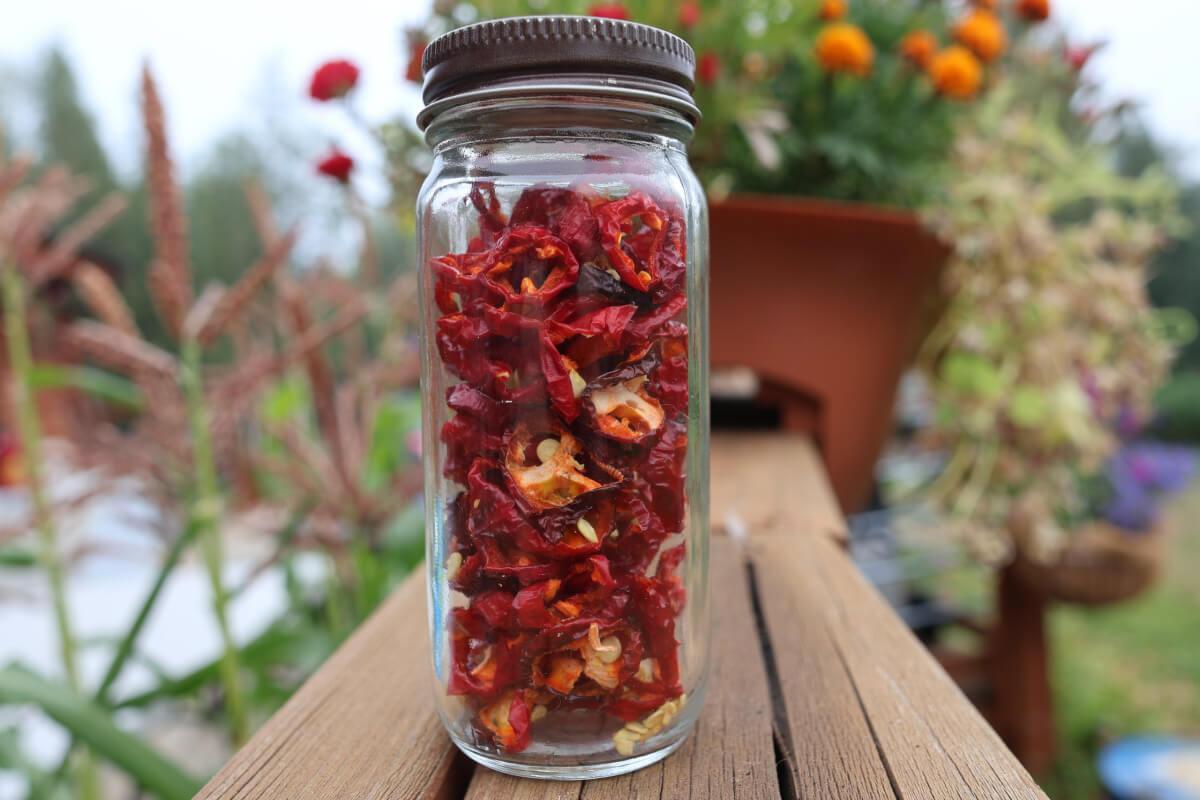Today we’re going to talk about one of the lesser used, but sometimes extremely valuable, preservation techniques: dehydration. We practice dehydration several times a year and sometimes it’s the right choice to get your food to last!
As some of you know, we are “modern preservationists” that like to get around the concept of producing ready-to-go end products that maximize the value of our harvests. Put simply, dehydrators aren’t all about creating “prepper food,” they have a solid place in the preserver’s repertoire.
In this case, we wanted to take some of our fine looking Cayenne crop and turn it into a Cayenne pepper powder. We frequently use pepper powders (and flakes) in our dishes, both to kick up the heat and also to provide a little bit of that peppery goodness. Once preserved this way, the products can last for years.
In this case, dehydration is the perfect solution and fortunately, it’s really easy. All we have to do is slice up our peppers and put them into our dehydrator for a few hours. From here, we put the dried peppers into an airtight jar, which we’re using as a quality control step to ensure dehydration is complete.
The goal of the jar is to determine if there is any moisture left in the produce. If there is, you’ll see little droplets emerge on the sides of the glass. This indicates you need a bit more time in the dehydrator. If, after a few days, there’s no evidence of moisture, then you’re clear to move on to the next step!
You can create pepper flakes and powders pretty easily. For flakes, you just put the dried peppers into a food processor (or blender, if that’s all you’ve got) and pulverize. This will create perfect pepper flakes, just like you buy in those overpriced jars from the grocer.
For pepper powders, you need a tool with a little higher power and higher speed. We like to use a spice grinder (aka coffee grinder) as these can “grind” fast enough to make actual powders. Be a bit careful when you do this, since aerosolized pepper powder can be a bit rough if you breathe it in!
Other examples of how we use dehydration are to create sun dried tomatoes, all sorts of “bougie” pepper products and dried cucumbers/lemons/limes for a bit of a refreshing addition to those water glasses!


